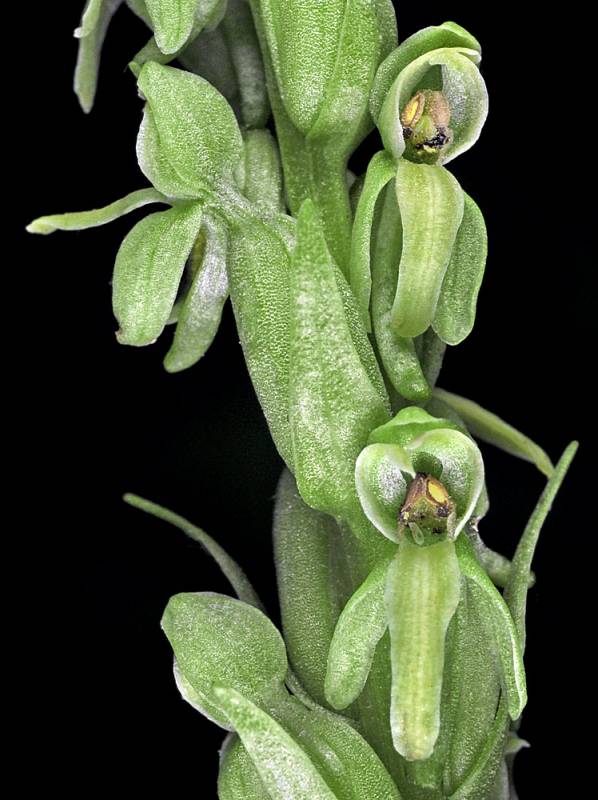Platanthera grandiflora
Platanthera huronensis
northern green bog-orchid
Leaves alternate, several, mostly on the lower half of the stem, sheathing, narrowly oblong-elliptic, 6-20 cm. long and 1-3 cm. broad, blunt to acute.
Inflorescence a densely-flowered, spike-like raceme 5-15 cm. long, the lower bracts 2-3 times as long as the flowers, the upper shorter than them;
flowers pale to deep green, often purple tinged or veined; upper sepal ovate-elliptic to sub-orbicular, rounded, 4-7 mm. long, 3-nerved, forming a distinct hood; lower sepals 3-nerved, spreading, ovate-lanceolate, 4-7 mm. long;
petals about equal to the sepals;
lip narrowly lanceolate, fleshy, 4-7 mm. long;
spur cylindric, usually somewhat curved, from much shorter to barely longer than the lip;
stamens and style fused to form a column about half as long as the upper sepal.
Platanthera grandiflora
Platanthera huronensis
- Local floras:
BC,
OR,
WA
- Local Web sites:
Flora NW,
PNW Herbaria
WildflowerSearch
iNaturalist (observations)
USDA Plants Database
- LBJ Wildflower Center
- SEINet
- Plants of the World Online
- Encyclopedia of Life
- Wikipedia
- Google Image Search


